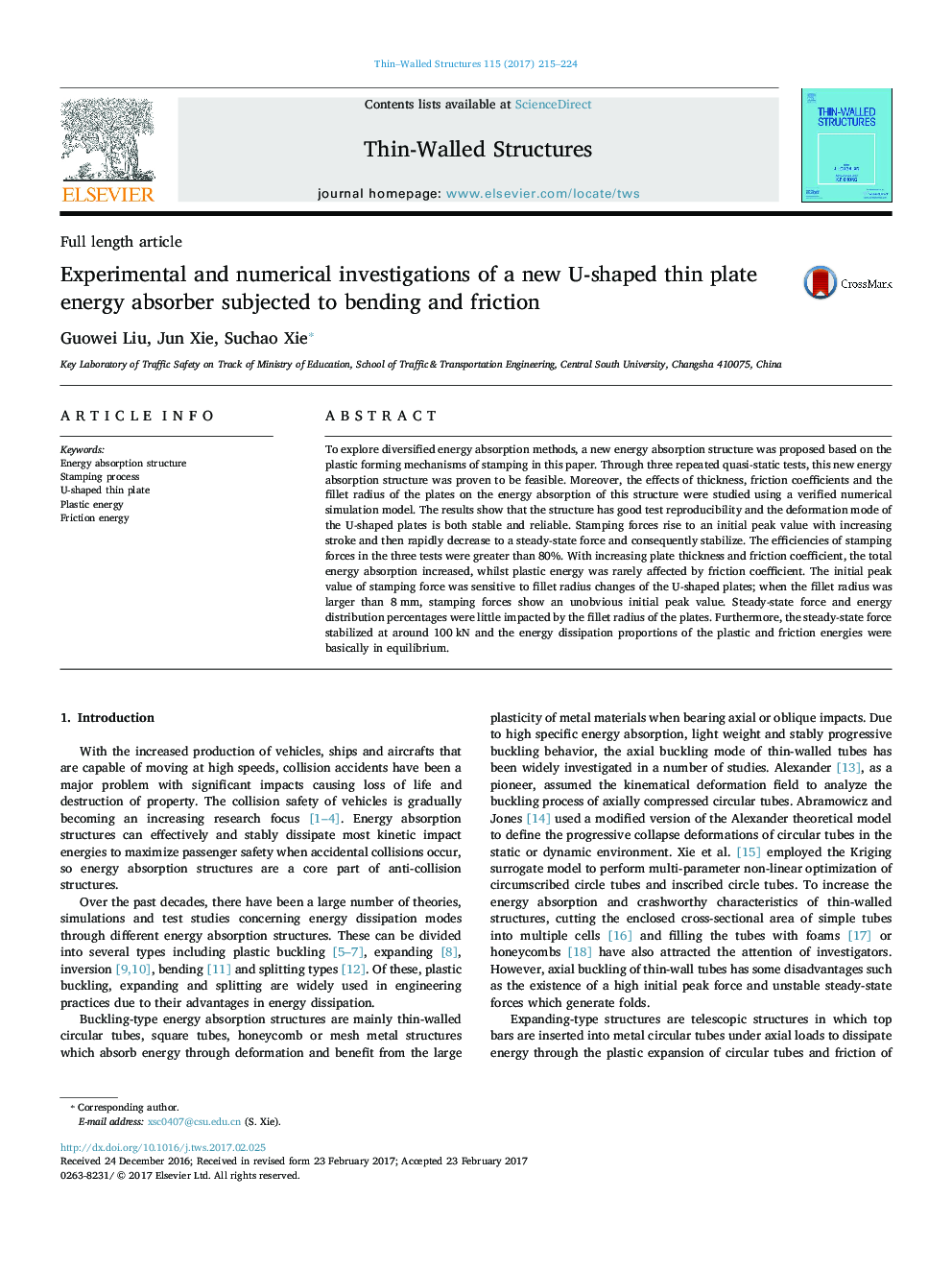| Article ID | Journal | Published Year | Pages | File Type |
|---|---|---|---|---|
| 4928657 | Thin-Walled Structures | 2017 | 10 Pages |
Abstract
To explore diversified energy absorption methods, a new energy absorption structure was proposed based on the plastic forming mechanisms of stamping in this paper. Through three repeated quasi-static tests, this new energy absorption structure was proven to be feasible. Moreover, the effects of thickness, friction coefficients and the fillet radius of the plates on the energy absorption of this structure were studied using a verified numerical simulation model. The results show that the structure has good test reproducibility and the deformation mode of the U-shaped plates is both stable and reliable. Stamping forces rise to an initial peak value with increasing stroke and then rapidly decrease to a steady-state force and consequently stabilize. The efficiencies of stamping forces in the three tests were greater than 80%. With increasing plate thickness and friction coefficient, the total energy absorption increased, whilst plastic energy was rarely affected by friction coefficient. The initial peak value of stamping force was sensitive to fillet radius changes of the U-shaped plates; when the fillet radius was larger than 8Â mm, stamping forces show an unobvious initial peak value. Steady-state force and energy distribution percentages were little impacted by the fillet radius of the plates. Furthermore, the steady-state force stabilized at around 100Â kN and the energy dissipation proportions of the plastic and friction energies were basically in equilibrium.
Related Topics
Physical Sciences and Engineering
Engineering
Civil and Structural Engineering
Authors
Guowei Liu, Jun Xie, Suchao Xie,
